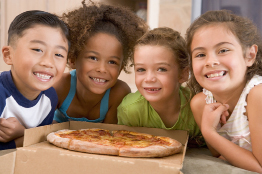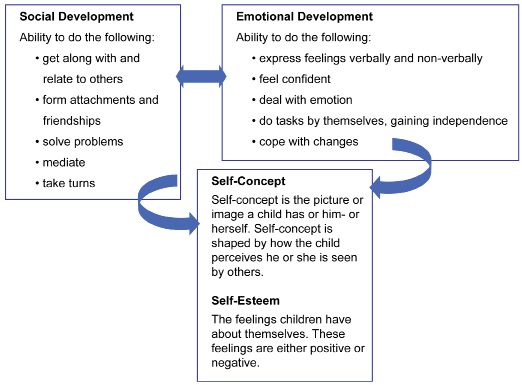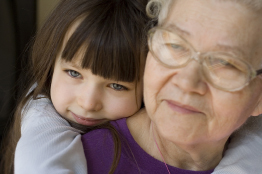Session 1
1. Session 1
1.2. Inquiry 1
Session 1: Social-Emotional Development
Inquiry 1: Social-Emotional Development
To gain an overview of children’s social-emotional development between the ages of birth to six years, watch the video “Social-Emotional Development.”
 Course Project
Course Project
This is your first reminder to start thinking about your Course Project. As you progress through this session, you should be working on items and strategies to include in your strategies box. How can you apply the information from the video about social-emotional development to items and strategies for your box?
What Is Social-Emotional Development?

© Monkey Business/8521382/Fotolia
Children learn to share as they develop socially.
Emotional development refers to the growth of children’s inner emotional needs, capabilities, and feelings. The following processes are part of emotional development:
- gaining self-awareness and the ability to express feelings verbally and non-verbally (e.g., “I don’t like it when Becky sits in my chair.”)
- learning about themselves and their self-confidence (e.g., “I’m a good soccer player.”)
- becoming independent (e.g., “Me do it!”)
- learning to deal with and understand emotions (e.g., “Johnny is sad because I took his toy.”)
- developing trust in oneself and in others (e.g., After falling, Samantha runs to her child care provider for a cuddle and says, “You kiss it better.”)
- coping with changes (e.g., Johnny cries when his mother picks him up early from the day home because he will miss his snack.)
Social development refers to children’s needs and abilities as they relate to others. As children develop socially, they learn to do the following:
- form attachments (e.g., Nine-month-old Tooki cries when his mother leaves the room and clings to her when she comes back.)
- solve problems (e.g., A five-year-old child says, “I didn’t mean to knock down your tower. Can I help you build it back up?”)
- play alongside or with others (e.g., As four-year-old Hanna plays with her doll, she looks up at the other children every once in awhile; three-year-old Stephan comes over to Hanna and says, “I’ll pretend to be the daddy.”)
- co-operate and take turns (e.g., “How about first you have a turn and then it’s my turn?”)
- make friends (e.g., “Josh, do you want to play with me?”)
Sometimes it is difficult to distinguish between a child’s social development and a child’s emotional development because each affects the other so strongly.
How Is Social-Emotional Development Related to Self-Esteem?
Self-esteem is how a person feels about herself or himself. A child’s self-esteem, or self-concept, involves the child’s feelings of self-worth. These feelings arise from the child’s feelings of personal, social, and emotional competency.
A child needs to have healthy social and emotional development to have high self-esteem. When a child is unable to express his or her feelings appropriately, the child can easily become frustrated and can have trouble making friends. For example, an older child may display poor self-esteem by taking toys from other children or biting others.
The following diagram summarizes how children’s social and emotional development are related to self-concept and self-esteem.

Important: To further develop your ideas and ensure you understand the links between social development, emotional development, self-concept, and self-esteem, discuss the diagram with a peer in your class or with a colleague in the child care facility. In your discussion, focus on your understanding of how children’s self-esteem and self-concept are connected and how social and emotional development are interrelated and influence self-esteem and self-concept.
Stages of Social-Emotional Development

© Marzanna Syncerz/473919/Fotolia
The stages of children’s emotional and social development have been studied by many psychologists and early childhood scholars. All agree that the experiences a child has in the early years have lasting effects on the way the child feels about himself or herself and other people.
Erik Erikson’s Theory of Social-Emotional Development helps us understand the stages a child will go through in this process.
 Course Project
Course Project
How can you apply the information from the video you watched at the start of Inquiry 1 and what you’ve learned about Erik Erikson’s theory to items and strategies for your strategies box?